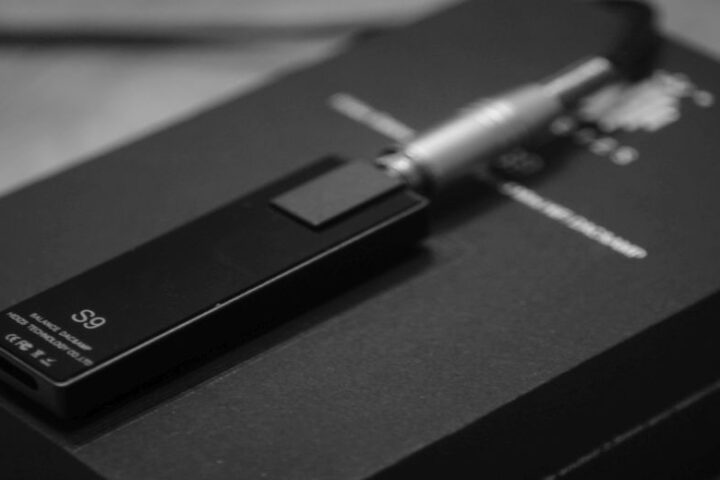

- #Apo equalizer to usb dac drivers#
- #Apo equalizer to usb dac driver#
- #Apo equalizer to usb dac full#
- #Apo equalizer to usb dac software#
- #Apo equalizer to usb dac Pc#
It does an acceptable job, but the inherent noise level (hiss) is much higher than on my standalone DAC. Zero sound lag compared to HDMI to optical converters built into TV sets and audio processors built into AV receivers.Īs an example, I am currently using the built-in DAC in my LG 27UL650-W monitor to output the audio signal via 3.5mm jack to my headphone amp and speaker amp.
#Apo equalizer to usb dac full#
Full 2 Volt output on the audio out which is very important when it comes to pushing less sensitive speakers and headphones to acceptable sound levels.Ĥ. Much reduced RFI and EMI interference from routers, radio stations, cell towers etc.ģ. Is this possible Soundcards are internal DAC that feed the headphone jack but the USB output is digital and unaffected by. Very low noise level meaning there should be no hiss audible when hooked up to sensitive headphones/speakers.Ģ. Local time: 01:05 AM Posted 14 October 2012 - 10:30 PM Winxppro 32bit. Using Peace I can see the volume bar moving and if I try the 'headphone test' I can hear the tones.
#Apo equalizer to usb dac Pc#
I have a Win10 PC using Musicbee for the player and going to the DAC/AMP using USB but Equalizer APO does not affect the headphones. There are several advantages to a standalone DAC compared to the things built-in our receivers and TVs:ġ. Fryboy - Hello, I have searched through this forum and Google without any success on my issue. However, I am still convinced that a standalone DAC is essential for achieving the best possible sound. There are fantastic-performing, fully transparent DACs with extremely low noise level and full 2V audio output at this price point.

I generally agree with the statement that spending more than $100 on a DAC is not a great idea as you hit the point of diminishing returns. If they show up unchecked, then attach it to that audio device and see if that helps. Try plugging the headphones in and running the Configurator. Equalizer APO needs to be assigned to devices in the configurator. If the AVR has stereo pre-outs, you are likely better-off connecting an amplifier to that. Its probably from the headphones disconnecting and reconnecting. When people say that a "DAC" made a big difference to their setup, it's usually a combined DAC/Amp, and the amp is what's doing most of that work.
#Apo equalizer to usb dac driver#
If no ASIO driver is selected within the services configuration menus, the dialog window will simply show "ASIO not active".Īt the end of the day, when playing your favorite music via apps or players of your choice using ASIO or Exclusive mode (WASAPI), the display of the DAC will forcibly show you the right values.AVRs typically have high impedance headphone outputs - which results in distortion, and worse performance at lower frequencies.Ī proper headphone amplifier will have a very low impedance output - ideally less than 1/8th the headphone impedance.Ī headphone amplifier should typically have options to switch between low/med/high gain levels to match low/med/high impedance headphones, giving you a more appropriate range on the volume control, and less noise.Ī DAC generally doesn't do much except eliminate noise from the signal, if that's a problem. Tidal and Qobuz completely override the APO equalizer functionalities, Amazon MU doesn't, leaving the listener able to alter the sound with APO.Ībout the ASIO driver dialog window, it will show "ASIO active" only when any service (or player) is configured to use the ASIO driver. Raspberry Pi OS finds the USB DAC and works with it no issues.
#Apo equalizer to usb dac software#
Apparently, people tried to reverse engineer commercial virtualizer software by measuring the 'impulse response functions' produced from that software. This is easily verified if you use any external APO equalizer on your PC: There is a free program called HeSuVi that uses the Equalizer APO, which runs under Microsoft Windows, to emulate the virtualization produced by some of those programs.

#Apo equalizer to usb dac drivers#
Tidal and Qobuz natively manage the "exclusive mode" that is, simply, the option that the native apps (or also file players) offer to the listener to select the WASAPI drivers embedded in W10-11.Īmazon Music Unlimited also enables to select the exclusive mode, but it actually doesn't override the W10-11 Mixer. What I wrote is valid either for the native application of the streaming services or for file players, such as Jriver, AIMP, Foobar.


 0 kommentar(er)
0 kommentar(er)
